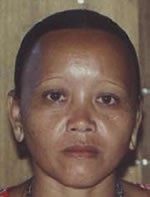Batu Punan in Malaysia

Photo Source:
Copyrighted © 2026
Southeast Asia Link - SEALINK All rights reserved. Used with permission |
Send Joshua Project a map of this people group.
|
| People Name: | Batu Punan |
| Country: | Malaysia |
| 10/40 Window: | Yes |
| Population: | 1,400 |
| World Population: | 1,400 |
| Primary Language: | Malay |
| Primary Religion: | Ethnic Religions |
| Christian Adherents: | 6.00 % |
| Evangelicals: | 1.00 % |
| Scripture: | Complete Bible |
| Ministry Resources: | Yes |
| Jesus Film: | Yes |
| Audio Recordings: | Yes |
| People Cluster: | West Malaysia Indigenous |
| Affinity Bloc: | Malay Peoples |
| Progress Level: |
|
Introduction / History
The Punan may have been the original inhabitants of the Niah area and may have descended from the people who used the Niah Caves in Sarawak. They live a more settled life than the Penan.
Some people assume that the Punan and Penan (another people group in Sarawak) are the same since they have similar lifestyles. They are distinguished by language variances and some physical characteristics. The Punan have a darker complexion, wear their hair in a different style, have natural body hair, and don't put tattoos on their bodies. The Penan, on the other hand, pluck their facial hair, eyebrows, and eyelashes, and tattoo their bodies.
There are several main Punan dialects, though their populations are relatively small. The Punan Bah-Biau are found in central Sarawak around Merit on the Rajang River. The Punan Batu 1 (linguistically very different from Punan Bah-Biau) have settled west of Long Geng, southeast of Belaga.
What Are Their Lives Like?
The Punan are mostly agriculturists and skilled laborers. Some work in oil palm plantations and in the logging industry. In farming, they use the slash and burn method, clearing and burning their fields. The soil is then fertilized by the ashes to make it suitable for planting rice. They practice the art of making the parang 'long knife', which they may have adopted from the Kayan and Kenyah people groups in Sarawak.
They are well known for their singing and chanting. They sing even late at night. Some songs are sung to the spirit world, while other songs are for pleasure and storytelling. The mouth harp, which is made from a sliver of palm wood and is stored in a small bamboo case, is the most common traditional instrument of the Punan. The harp is played by holding it in the mouth and plucking it with the index finger. Young and old, men and women, enjoy playing the instrument for entertainment. It is also a way for the young to communicate their desire and interest in one another.
What Are Their Beliefs?
Some Punan have practiced Islam since the Malays, who arrived in the Niah area from Brunei, converted some of them, probably in the 18th century. Still, the Punan are predominantly animists. For instance, when the Punan find something from the forest while they are hunting or gathering materials, they will chant a prayer to a deity called Bungan Malan. Regarding the spirits, they must humble themselves and ask for forgiveness and a blessing from Bungan Malan. Originally, Bungan Malan was a Kenyah deity, and the Punan have adopted this belief. The medicine man holds great influence among the Punan. They believe that he can cure their illnesses.
What Are Their Needs?
The Punan cannot escape the era of globalization. They need education and skills to help them adapt to the quickly changing world around them. They also need assistance to improve their farming techniques, thereby enhancing their basic livelihood.
Prayer Points
Pray for teachers and educational materials to help educate the Punan.
Pray that motivated believers will help them gain access to the good news in their own language.
Pray for the Holy Spirit to move powerfully in Punan families and churches, drawing them to the Lord of lords.